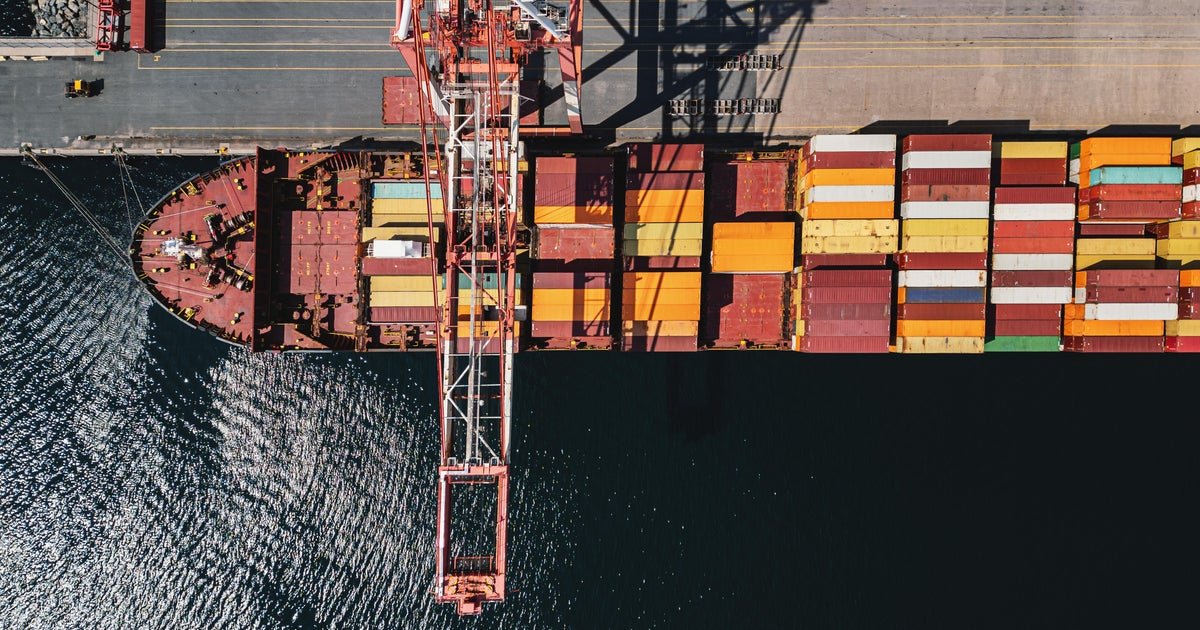Despite concerns earlier this year that President Trump’s tariffs would cause a renewed bout of inflation, the prices of goods and services across the U.S. have remained relatively stable.
The personal consumption expenditures price index, the Federal Reserve’s preferred inflation gauge, rose 2.3% in May, modestly above the central bank’s 2% annual target. The May Consumer Price Index rose at an annual rate of 2.4%, cooler than economists expected.
The muted inflation data reflects short-term steps taken by some companies to offset the tariff impact, such as pre-ordering inventory, absorbing the cost of some tariffs to cushion consumers from price hikes and leveraging some loopholes to delay or lower duty payments, economists say.
“Many businesses have been creative and savvy in using different means to buffer the initial shock,” EY-Parthenon chief economist Gregory Daco told CBS MoneyWatch.
That doesn’t mean consumers and businesses, who were battered by the highest inflation in decades during the pandemic, are out of the woods. Gennadiy Goldberg, head of U.S. rates strategy at TD Securities, thinks prices are likely to rise as tariffs gradually push up import costs in the second half of the year.
“We still think in next few months we’ll continue to see the impact of the new trade policies on price levels, and they should translate into higher inflation,” Goldberg said.
Here are three reasons why tariffs haven’t driven up inflation as much as many economists expected, at least for now.
Aggressive “front-loading”
After the Trump administration announced a range of tariffs on Canada, China, Mexico and dozens of other countries earlier this year, many companies scrambled to stock up, or front-load, on products, parts and other imports to avoid incurring added tariff costs.
“They tried to front-run the imposition of the duties by importing rapidly,” Daco said. “They bought goods they needed and stocked them, so that was the first line of defense against the tariffs.”
Much of that extra inventory remains in warehouses or on store shelves, allowing importers to delay price hikes.
“Lots of retailers pre-ordered inventory before the tariffs went into effect, so the inventory they’re selling has not been marked up yet,” Goldberg said.
Waiting for clarity
Some businesses facing higher tariffs are choosing to hold off on passing any cost increases through to consumers as they wait for the fog around U.S. trade policy to lift.
The Trump administration in April froze most of its tariffs for 90 days to allow time for negotiations, with that pause due to expire on July 9. And after announcing tariffs of as much as 145% on Chinese imports earlier this year, Mr. Trump and Chinese officials on Thursday said the two countries have agreed on the framework for a trade deal.
“We have had literally dozens of changes in tariff policy in the last five months. In that highly uncertain environment, companies that sell items that are subject to tariff may be cautious about raising prices immediately,” Charley Ballard, professor of economics emeritus at Michigan State University, told CBS MoneyWatch.
Companies often refrain from raising prices to avoid scaring away consumers and losing market share to competitors.
Added Daco: “Essentially, some business decided to not immediately pass on the cost. They said, ‘Let’s see if we can hold out for a month, delay some imports, use the inventory on hand and be creative in terms of our broader pricing strategy’.”
Although tariffs are paid by importers, which typically pass those costs on to consumers, some foreign exporters have also been willing to take a hit.
Lower tariff costs
Although Mr. Trump has announced sky-high tariff rates, the actual duties collected at the U.S. border so far are lower than the official rates. That’s because some importers have been able to skirt the levies by storing goods in so-called bonded warehouses or foreign trade zones.
Businesses can use bonded warehouses, which are usually located near major commercial ports, to temporarily store goods, components and other inputs without immediately having to pay tariffs or taxes.
“If you make use of a warehouse or so-called foreign trade zone, you are able to delay the payment of tariffs until these goods are put into commerce,” Daco said. “So it’s a free-trade zone, or imaginary area that is not subject to tariffs.”
Additionally, the U.S. has implemented a number of tariff exemptions and exclusions. In practice, that has resulted in the actual levies on imports often being lower than the nominal rate initially announced the White House.
As of June, the effective U.S. tariff rate on all imports was around 10%, compared with an official average tariff rate of 15%.
Still, business can’t hold the line on price hikes indefinitely if tariffs remain elevated, experts say. Federal Reserve Chair Jerome Powell told lawmakers this week that tariffs could yet spark higher inflation, likely starting this summer,
“Part of that is due to the start-stop nature of the tariffs that have been introduced,” James Rossiter, head of global macro strategy at TD Securities, told CBS MoneyWatch.
“For us it’s a question of patience more than a mystery as to where it is,” he added. “The typical pass-through takes some time. We expect July to be when you start to see it more.”
